Breast Cancer Overview
- Cancer and the breast
- Symptoms of breast cancer
- Types of breast cancer
- Breast cancer investigations
- Breast cancer treatments
- Supportive care
Cancer and the breast
Cancer overview
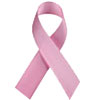 | Cancer, a condition of abnormal cell growth, is the second most common cause of death in developed countries. Normal cell growth is a carefully regulated process. Cancer cells replicate in an uncontrolled manner, and can move from one part of the body to another. |
For more information, see Cancer: Overview.
Anatomy of the breast
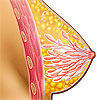 | The breasts are specialised organs located on the anterior chest wall. The female breast is more developed than the male breast, as their primary function is to produce milk for an infant’s nutrition. It is important for women to understand the normal anatomy and function of their breasts so that any abnormalities can be detected and treated. |
For more information, see Anatomy of the Breast.
Video: Breast Cancer: The risks, signs & symptoms, screening and hot to assess your own breasts
 | Professor Christobel Saunders talks about Breast Cancer: The risks, signs & symptoms, screening and how to assess your own breasts. |
Watch the video Breast Cancer: The risks, signs & symptoms, screening and hot to assess your own breasts.
Video: Getting better after breast cancer
 | Professor Christobel Saunders discusses how to improve your health after breast cancer treatment. |
Watch the video Getting healthy after breast cancer.
Video: Menopause and breast cancer
 | Professor Christobel Saunders talks about managing menopause symptoms after breast cancer. |
Watch the video Menopause and Breast Cancer.
Symptoms of breast cancer
Breast pain (mastalgia)
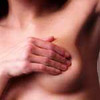 | Mastalgia or breast pain is commonly encountered by women. It is thought to be present in up to 69% of women and is most common in women between the ages of 30 and 50. Breast pain may be due to normal cyclical changes in hormone levels or due to certain diseases. Breast cancer is rarely the cause of breast pain, only accounting for 1.2–6.7% of cases of this symptom. |
For more information, see Breast Pain (Mastalgia).
Nipple discharge
 | Nipple discharge is defined as any leakage of fluid from the breast. It is one of the most commonly encountered breast-related symptoms. It can account for up to 7% of all breast symptoms and may be due to innocent (benign) causes or an underlying cancer (malignant cause). There is an underlying cancer in 1–9% of all nipple discharge cases, depending on the individual’s age and the characteristics of the discharge. |
For more information, see Nipple Discharge.
Types of breast cancer
Carcinoma of the breast
 | Breast diseases such as breast cancer predominantly affect women. This is because male breasts are more rudimentary than female breasts, making them more resistant to cancer. Early breast cancer refers to Stage I, and some Stage II, cancers only. 15–30% of breast cancers are non-invasive. |
For more information, see Carcinoma of the Breast.
Pre-invasive ductal carcinoma (DCIS)
 | Pre-invasive ductal carcinoma, also called ductal carcinoma in situ (DCIS), affects the ducts of the breast. Cancer cells in DCIS have not yet penetrated the epithelial lining (basement membrane) of the ducts. DCIS is an early form of breast cancer. |
For more information, see Pre-Invasive Ductal Carcinoma (DCIS).
Pre-invasive lobular carcinoma (LCIS)
 | Pre-invasive lobular carcinoma, also called lobular carcinoma in situ (LCIS), affects the lobules of the breast. Cancer cells in LCIS have not yet spread beyond the lining of the lobule. LCIS is an early form of breast cancer. |
For more information, see Pre-Invasive Lobular Carcinoma (LCIS).
Invasive breast carcinoma
 | Invasive breast carcinomas are cancers originating from breast tissue. They may originate in the milk ducts and/or glandular (breast milk producing) tissue of the breast and invade into normal healthy tissues. There are several different types of breast cancer, but infiltrating ductal carcinoma is the most common type of invasive breast cancer accounting for 70 to 80% of invasive lesions. |
For more information, see Invasive breast carcinoma.
Inflammatory carcinoma of the breast
 | Inflammatory breast cancer is a rare and aggressive form of invasive breast cancer, in which the skin of the breast becomes red, inflamed and pitted in appearance. |
For more information, see Inflammatory Carcinoma of the Breast.
Breast cancer investigations
Cancer screening
 | A screening test is any investigative method that can be applied to a seemingly healthy patient for the purposes of diagnosing underlying conditions that may have otherwise gone unnoticed. The purpose of such a test is to allow for treatment of these conditions to be started as soon as possible, leading to better outcomes. |
For more information, see Cancer Screening.
Early detection of breast cancer
 | The early detection of breast cancer in women is important for the effective management of the disease. Early detection methods for breast cancer include screening mammography, clinical breast examination (carried out by a trained health professional) and breast awareness. |
For more information, see Early Detection of Breast Cancer.
Staging for breast cancer
 | Staging is a method of categorising cancers based on their size, invasiveness and if they have spread to other sites in the body. This information can be used to quantify the prognosis, determine the most suitable treatments for a particular individual, and help compare treatment groups in clinical trials. The staging system most widely used by doctors for breast cancer is the TNM system. |
For more information, see Breast Cancer Staging.
Breast imaging (mammography)
 | A mammography is an x-ray of the breast, used to evaluate and diagnose conditions such as cancer. In Australia, it is recommended that all women over 50 years of age have a screening mammogram every two years. |
For more information, see Breast Imaging (Mammography).
Core biopsy
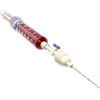 | A core biopsy is a procedure where a needle is passed through the skin to take a sample of tissue from a mass or lump. It may be performed when a suspicious lump is found, for example a breast lump or enlarged lymph node, or if an abnormality is detected on an imaging test such as x-ray, ultrasound or mammography. |
For more information, see Core Biopsy.
Pathology testing for breast cancer
 | In a patient with a suspicious abnormality on physical examination or mammogram, the best way to arrive at a diagnosis is through a biopsy. Pathology testing allows the cancer to be graded, and determines whether the cancer is invasive or non-invasive. |
For more information, see Pathology Testing for Breast Cancer.
Genetic typing of cancers
 | Individuals that inherit a genetic mutation from their parents are at a greater risk of certain types of cancers. Familial cancer syndromes are the group of cancers where patients inherit genes that do not function properly, increasing the risk of developing cancer. |
For more information, see Genetic Typing of Cancers.
Breast cancer treatments
Chemotherapy
 | Chemotherapy refers to the use of cytotoxic drugs in the treatment of cancer. Tumour cells are more sensitive than normal cells to chemotherapeutic drugs because they are rapidly dividing cells. Chemotherapy treatment disrupts the cell cycle in an attempt to stop cell division or cause the cell to die. |
For more information, see Chemotherapy.
Radiotherapy
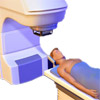 | Radiotherapy is the use of ionising radiation in the treatment of cancer and is based on the ability of radiation to interact with the atoms and molecules of tumour cells to produce specific harmful biological effects. Radiation tends to damage cancer cells more than normal cells. |
For more information, see Radiotherapy.
Breast conserving surgery
 | Breast conserving surgery is a type of surgical treatment for early breast cancer. It refers to the removal of the breast tumour only, leaving the rest of the breast intact. Breast conserving surgery is a safe alternative to mastectomy for some women with early breast cancer. |
For more information, see Breast Conserving Surgery.
Mastectomy
 | A mastectomy is a type of surgical treatment for breast cancer that removes the whole breast. Mastectomy is often used when a breast tumour is too large to allow removal with preservation of the surrounding breast tissue. Some women choose mastectomy over breast conserving surgery to avoid the need for radiotherapy. |
For more information, see Mastectomy.
Biological therapy (Biotherapy)
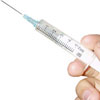 | Biological therapy, or biotherapy, immunotherapy or biological response modifiers, are gaining increasing prominence as anti-cancer agents. They may be used either alone or in combination with traditional anti-cancer treatments such as chemotherapy. |
For more information, see Biological therapy (Biotherapy).
Sexuality following breast cancer treatment
 | Breast cancer treatment, including surgery, chemotherapy and radiotherapy, can have lasting physical and emotional effects on a woman and her family. The issue of sexuality following breast cancer treatment is often neglected, but can have a significant impact on a woman’s quality of life. |
For more information, see Sexuality Following Breast Cancer Treatment.
Supportive care
Breast Cancer Foundation of WA
 | Founded in 2000 by Ros Worthington OAM, the Breast Cancer Foundation of Western Australia Inc (BCFWA) is a WA charity that provides personalised emotional, practical and financial support to people affected by breast cancer. This includes carers and family, who have their own challenges and needs through the experience. |
For more information, see Breast Cancer Foundation of WA.
Dates
Tags
Created by:

 Login
Login














